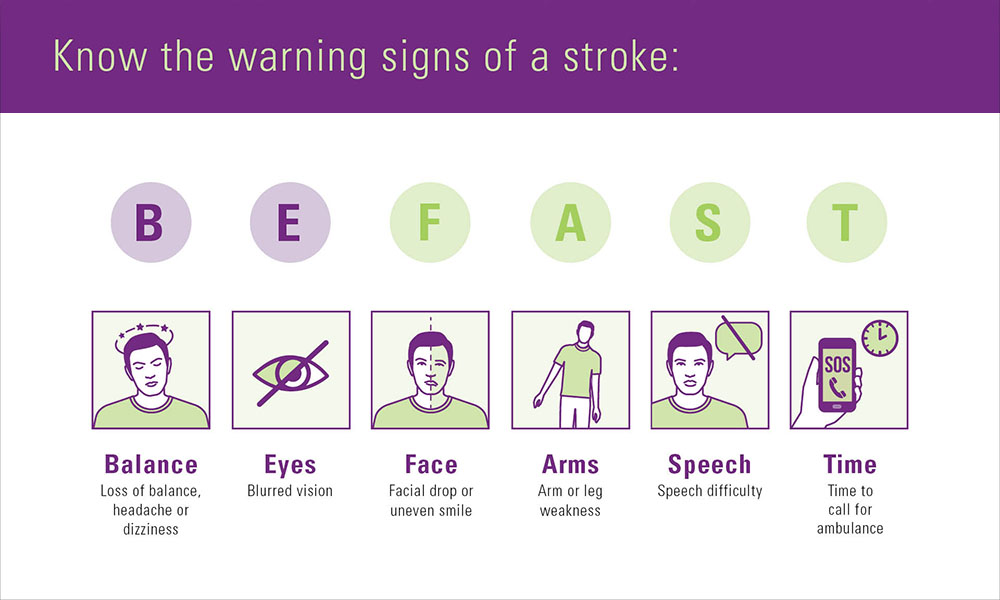Unraveling the BEFAST acronym: A guide to recognizing stroke signs and symptoms
May 5, 2024Categories: Blog Posts
Tags: Stroke
 Every 40 seconds, someone in the United States experiences a stroke, emphasizing the critical need for prompt recognition and intervention. BEFAST is a valuable reminder for quickly identifying stroke symptoms, urging individuals to act fast and seek immediate medical attention. Let’s explore each element of BEFAST to grasp its significance in stroke awareness and response.
Every 40 seconds, someone in the United States experiences a stroke, emphasizing the critical need for prompt recognition and intervention. BEFAST is a valuable reminder for quickly identifying stroke symptoms, urging individuals to act fast and seek immediate medical attention. Let’s explore each element of BEFAST to grasp its significance in stroke awareness and response.
B: Balance
The “B” in BEFAST highlights the sudden onset of balance issues as a potential indicator of a stroke. Individuals may experience sudden dizziness, loss of coordination or difficulty walking without a clear cause.
E: Eyes
The “E” emphasizes changes in vision, such as sudden blurred or double vision or the loss of vision in one or both eyes. Vision disturbances happening suddenly or persistently warrant prompt immediate action.
F: Face
Facial drooping, asymmetry or weakness, particularly on one side of the face, constitutes a critical warning sign denoted by the “F” in BEFAST. Asking the individual to smile and observing if one side of the face droops can help in recognizing this symptom.
A: Arms
The “A” underscores weakness or numbness in the arms, particularly on one side of the body. When raising both arms, if one arm drifts downward or feels weak or numb, it could signify a stroke.
S: Speech
Denoted by the “S” in BEFAST, speech difficulties—such as slurred speech or difficulty speaking or understanding language—are one of the most commonly observed indicators of a stroke. Asking the individual to repeat a simple sentence or noting if speech sounds unusual or incomprehensible aids in recognizing this symptom.
T: Time
Time is of the essence in stroke care. The final component of BEFAST emphasizes the urgency of seeking medical attention immediately upon recognizing any stroke symptoms. Rapid response enables timely assessment, diagnosis and administration of lifesaving treatments, maximizing the chances of recovery and minimizing potential complications. Call 911 immediately if you have evaluated and suspect someone is having a stroke.
Stroke awareness and swift action are critical to a patient’s treatment and recovery. The BEFAST acronym serves as a powerful tool for recognizing stroke signs and symptoms promptly, enabling timely intervention that helps to save lives. By familiarizing ourselves with the components of BEFAST and advocating for its widespread adoption, we can empower individuals to act decisively in the face of stroke, ensuring better outcomes and improved quality of life for all.
In 60 seconds or less, you can discover your individual risk level for a stroke. Take our risk quiz today.
